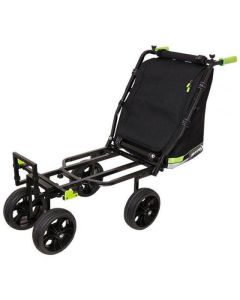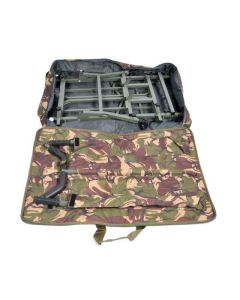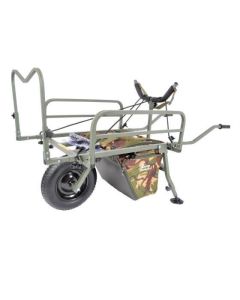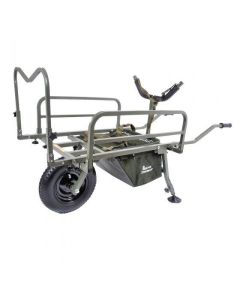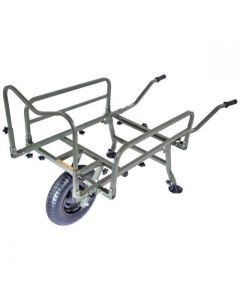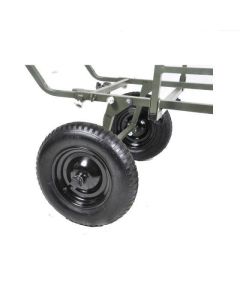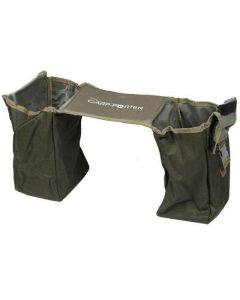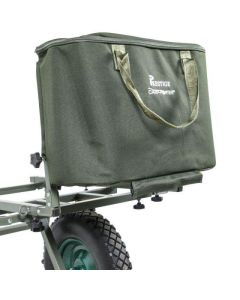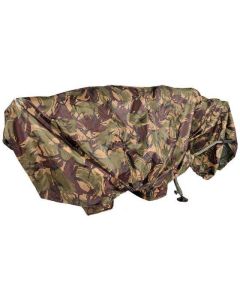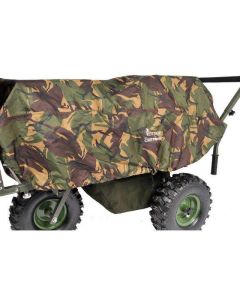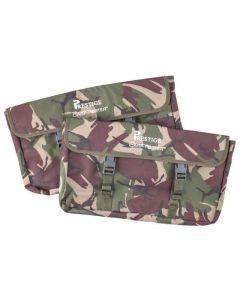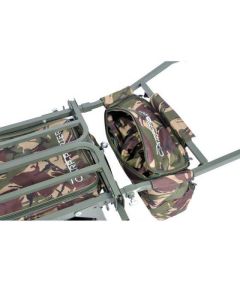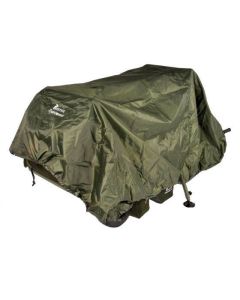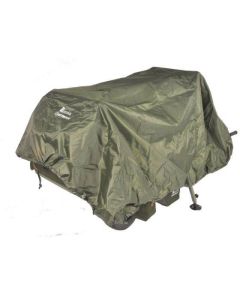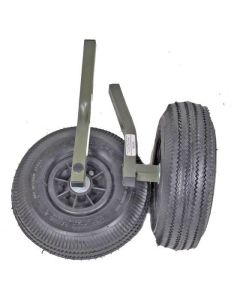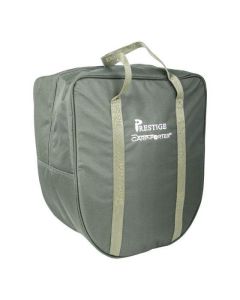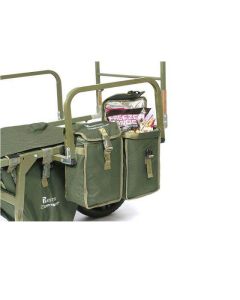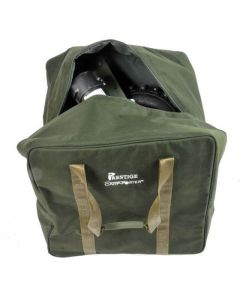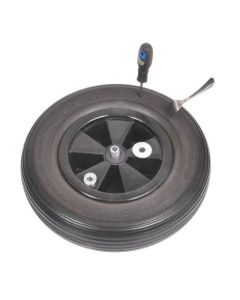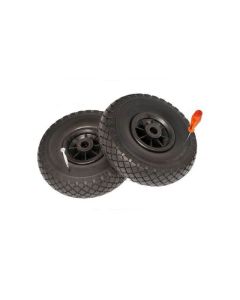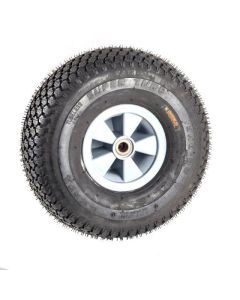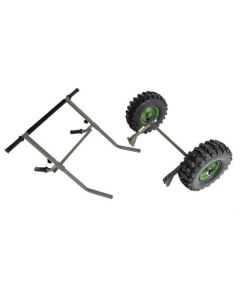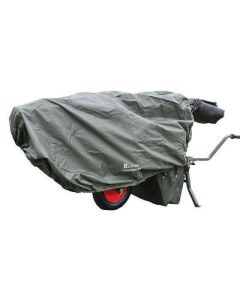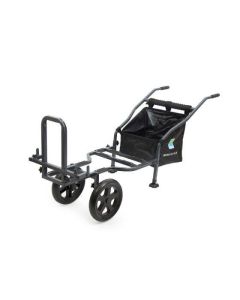The Evolution of Fishing Trolleys and Barrows: A Comprehensive Guide
Angling is a pursuit deeply rooted in tradition, but modern technology has yet to be turned in to enhance the angling experience. Fishing trolleys and barrows have come a long way from their humble beginnings, evolving into sophisticated tools that cater to the diverse needs of anglers.
The Historical Journey
In the early days of angling, transporting fishing equipment could have been more convenient. Anglers had to rely on makeshift carriers or carry their gear by hand. It was in the mid-20th century that the first commercially available fishing barrows and trolleys appeared on the market.
These basic early models featured wooden frames and small, solid wheels. They were primarily used by carp anglers who needed to transport heavy tackle boxes and bait to their chosen spots. While rudimentary by today's standards, these early trolleys represented a significant step forward in convenience and efficiency.
The Rise of Specialization
As angling gained popularity and diversified into various disciplines, such as match fishing, coarse fishing, and carp fishing, the demand for specialised equipment grew. Anglers needed trolleys and barrows that could cater to the specific requirements of their chosen discipline.
Match Fishing Trolleys Match fishing is all about precision and efficiency. Every second counts, and match anglers needed trolleys to help them quickly set up and access their gear. Match fishing trolleys were designed to be lightweight, compact, and easy to deploy. They featured open designs for swift access to tackle and bait, allowing anglers to stay focused on the competition. Models like the Preston Innovations Spacestation Shuttle became the go-to choice for serious match anglers.
Coarse Fishing Trolleys Coarse anglers, on the other hand, require versatility. They fished in various conditions and needed trolleys to handle different terrains and carry multiple gear. Coarse fishing trolleys offered modular flexibility, with adjustable components for a tailored gear setup. Robust, air-filled tires ensured a smooth journey across rugged landscapes. The MAP Extending Barrow MK2 exemplified this adaptability, becoming a versatile workhorse for coarse anglers.
Carp Fishing Barrows Carp fishing sessions are often extended over several days, necessitating a substantial amount of gear. Dedicated carp anglers needed barrows with generous load capacities and rugged durability. Carp fishing barrows provided spacious load areas for shelters, seating, and extensive carp fishing essentials. Sturdy wheel construction and solid frame architecture ensured carp anglers could reliably transport their gear. The Carp Porter Big Boy Tri-Porter DPM emerged as the top choice for carp anglers who refused to compromise on their equipment.
The Technological Revolution
In the 21st century, we have witnessed a technological revolution in fishing trolleys and barrows. Modern materials, advanced engineering, and cutting-edge features transformed these essential tools.
Electric Fishing Trolleys Electric fishing trolleys represented a groundbreaking innovation. These high-tech trolleys were designed to effortlessly transport fishing gear, reducing physical strain on anglers and enhancing mobility across various terrains. They featured GPS navigation, automated return functions, and improved battery technology. Electric trolleys were suitable for coarse, match, and general anglers, catering to various fishing scenarios. Their sustainable and eco-conscious designs are aligned with modern environmental concerns. As technology advanced, electric fishing trolleys were poised to become essential tools for anglers.
Future Trends and Considerations The future of fishing trolleys and barrows holds exciting possibilities. Anticipated advancements include solar charging capabilities, further enhancing their sustainability. Integration with fishing apps is expected to provide anglers with valuable information and convenience. The continued evolution of materials and design will ensure that these tools keep pace with anglers' changing needs and expectations.
Choosing the Right Equipment
Selecting the right fishing trolley or barrow is a decision that should be taken with seriousness. It'll need to carefully consider your angling discipline, the terrain you'll encounter, and the amount of gear you need to transport. Here are some key factors to keep in mind:
-
Discipline-Specific Features: Consider the most important features of your chosen angling discipline. Match anglers may prioritise speed and efficiency, while coarse anglers need storage flexibility. Carp anglers should focus on load capacity and stability.
-
Terrain: Think about the types of terrain you'll be navigating. If you encounter rough or uneven ground, please ensure your trolley or barrow is equipped to handle it.
-
Gear Load: Assess the amount of gear you typically carry. Could you make sure your chosen equipment can accommodate all your essentials?
-
Maintenance: Regular maintenance is essential to maintain your trolley or barrow. Could you check for loose bolts, inflate the wheels, and clean off any mud or debris after each use? Proper storage in a dry place will prevent rust and wear.
Expert Opinions
To provide further insights into fishing trolleys and barrows, we contacted experienced anglers and industry experts for their opinions and recommendations.
Conclusion
Choosing the right angling equipment, including fishing trolleys and barrows, will enhance your fishing experience. It's not just about the convenience of fishing bag transportation; it's about ensuring that once you reach the water's edge, you're prepared, comfortable, and ready for the day ahead. The best fishing stories often start with a seamless journey to the fishing spot, facilitated by the perfect fishing trolley or barrow. Make your choice carefully, and look forward to many successful fishing adventures.
Price and Model Highlights
Now, let's take a closer look at some key electric barrows, along with magazine-style product reviews and opinions:
-
Carp Porter MK8 Power-Porter (Price: £999.99)
- Review: Praised for its durability and high-torque gearbox, the MK8 Power-Porter is an ideal choice for anglers tackling rugged terrains.
- Opinion: Anglers appreciate the reliability of this model and its ability to handle tough conditions.
-
Carp Porter MK2 Power-Porter (Price: £899.99)
- Review: Known for its compact design, the MK2 Power-Porter is favoured by those who prioritise portability and ease of use.
- Opinion: Anglers find this model convenient for shorter fishing trips and situations where a lightweight option is preferred.
-
Carp Porter Xtreme Power-Porter (Price: £1,124.99)
- Review: Highlighted for its quick-release drive hub and all-terrain tire, the Xtreme Power-Porter is designed for extreme conditions.
- Opinion: Anglers who face challenging terrains appreciate the ruggedness of this model.
Electric barrows offer increased capacity, reduced physical effort, and adaptability to various terrains. They continue to evolve with innovations like GPS navigation and automated return functions, catering to individual angler preferences. Electric barrows are versatile and excel in various fishing environments, particularly in remote or hilly terrains. They are environmentally friendly and promote sustainable angling. Anticipated trends include solar charging capabilities and integration with fishing apps, further enhancing their utility and convenience. Battery life varies but is usually sufficient for a full day of fishing, and these barrows can handle steep inclines, making them a worthwhile investment for anglers.

